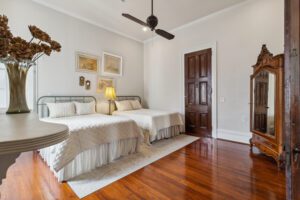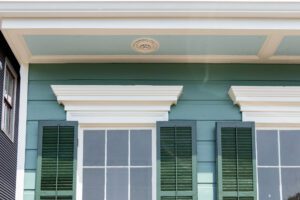Barge board is a distinctive building material with deep roots in New Orleans history. Found in many of the city’s historic homes, this wood was originally repurposed from the flatboats that carried goods down the Mississippi River in the 19th century. Because returning the barges upstream was impractical, they were dismantled and sold as inexpensive lumber.
Typically made from softwoods such as poplar or pine, barge board planks are about two inches thick, ranging from one to two feet in width, and up to 20 feet in length. What was once seen as cheap building material has become a prized feature in historic preservation and renovation projects, giving homes a tangible connection to the city’s past.
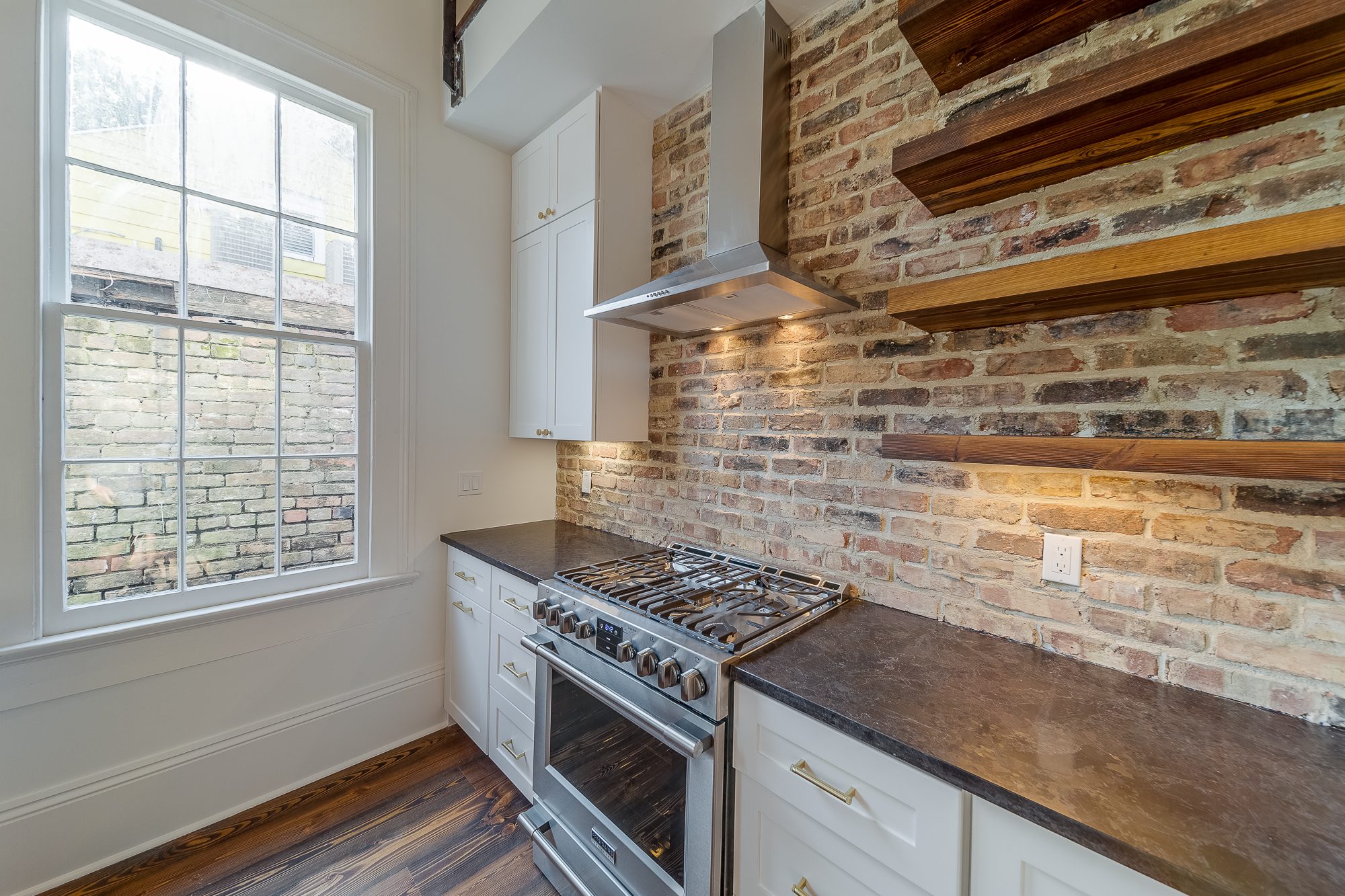
Where is Barge Board Found?
Barge board is commonly found in 19th-century Creole cottages and shotgun houses, particularly in neighborhoods like the Marigny, Bywater, and Tremé. It was a readily available and cost-effective material, making it a popular choice for New Orleans home construction. However, since there was no standardized method for building with barge board, no two homes are exactly alike. This variability makes it essential to work with an architect who understands barge board construction and its unique challenges.
How Was Barge Board Used in Historic Homes?
Barge board was typically used as structural wall material, eliminating the need for traditional stud framing. For single-story homes, the thick, solid wood boards were installed vertically on top of or directly to the side of the sill, creating a sturdy but unconventional wall system. Two-story buildings often used a method similar to balloon-framing where framing members extended the full height of the structure.
A telltale sign of barge board walls are the window and door frames, which on the interior of the home noticeably protrude from the thinner one and one-half to two inch walls—compared to standard four and one-half to six and one-half inch framed walls.
Historically, barge board walls were finished with clapboard siding on the exterior, which provided protection against the elements. Inside, homeowners frequently applied wallpaper directly to the barge board using adhesive. This finishing method was a cost-effective and practical way to cover the rough-hewn surface while adding decorative appeal. In many historic New Orleans homes, layers of old wallpaper remain hidden under newer finishes, offering a glimpse into past styles and preferences.
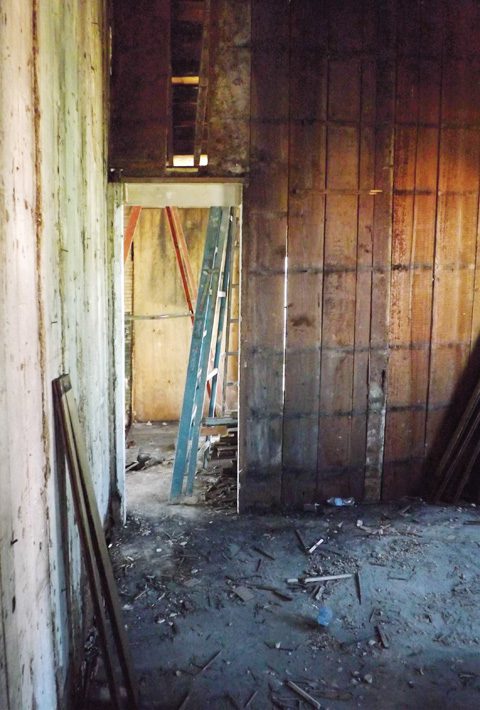

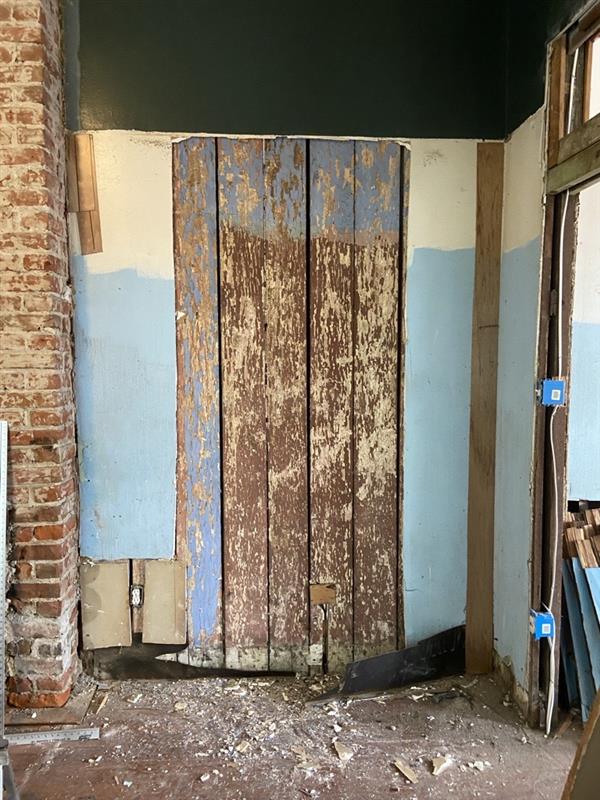
Renovating a Home with Barge Board
If you uncover barge board in your home during a renovation, you’ll need to consider how it affects your renovation plans. Unlike conventional walls, which have cavities for electrical wiring, plumbing, and insulation, barge board walls are solid wood and only two and one-half inches thick, making modern updates more complex.
When renovating, it’s important to consider the whole wall system if updates are necessary. Because of the lack of cavities and shallow thickness of the wall, plumbing and insulation are not feasible updates. Additions to electrical must be run on the outside of the wall with metal conduit.
One solution is to “fur out” the walls by adding new 2×4 or 2×6 framing. This allows space for modern utilities, improves insulation and energy efficiency, and helps straighten walls that may not be plumb. This process also increases wall depth to five to six inches, which reduces interior square footage, an important consideration for homes with a smaller footprint.
Another key concern with barge board homes is the condition of the sill, or the bottom of the barge board itself. These areas often suffer from moisture and termite damage, which can contribute to sagging walls and floors. Since barge board walls rely on this connection for stability, deterioration of the sill and lower parts of the boards can compromise the integrity of the structure. A thorough inspection by a qualified professional is crucial before beginning any renovation. An architect can assess stability and recommend reinforcement techniques if needed.
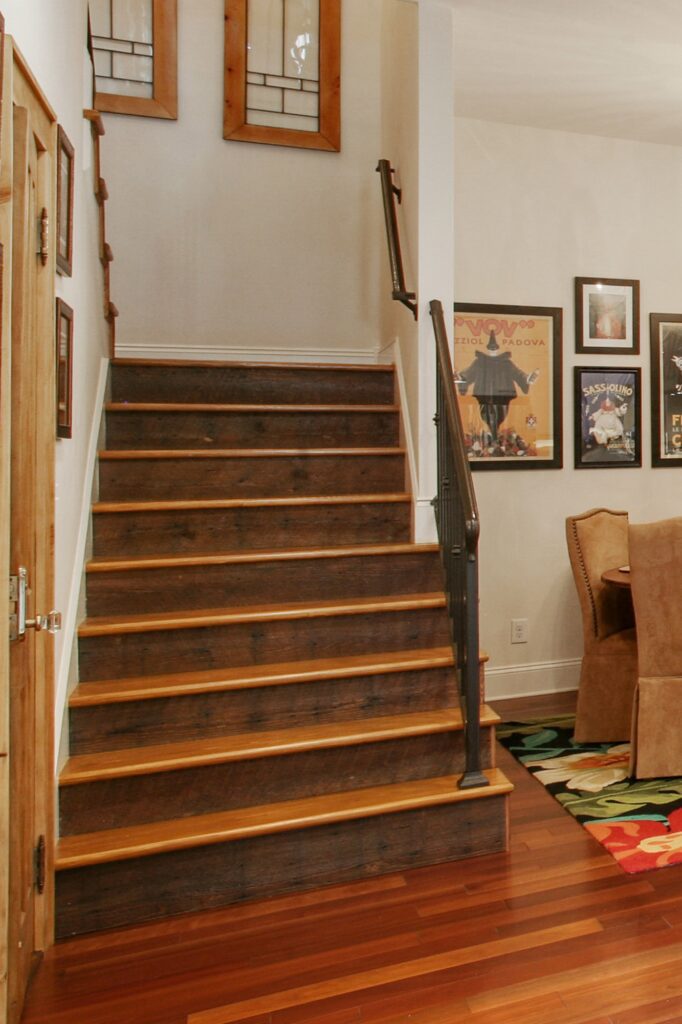
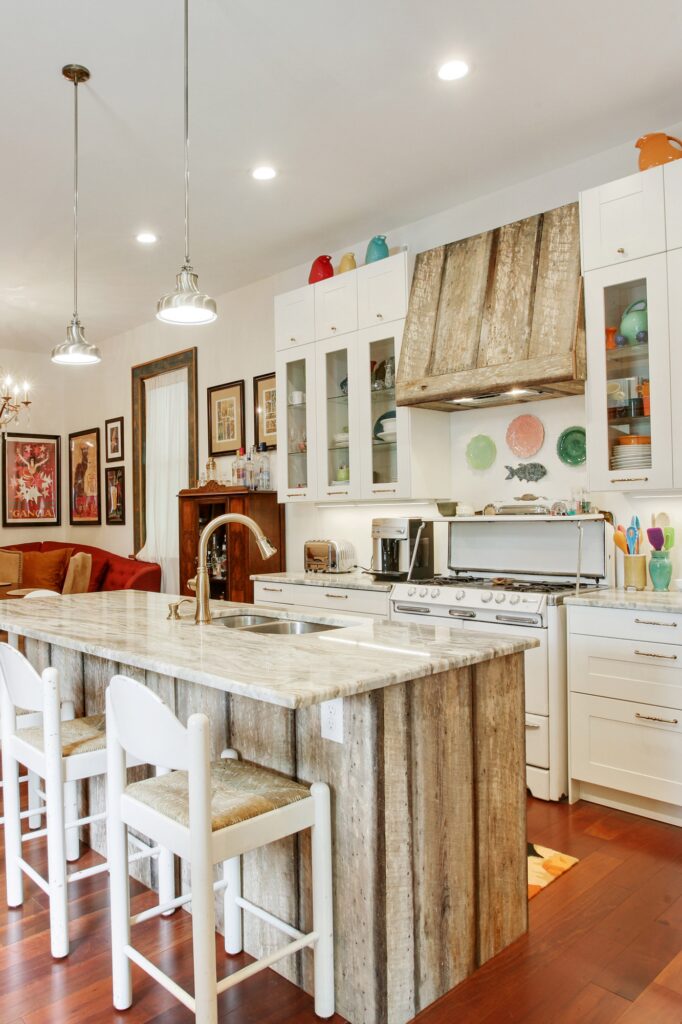
Preserving New Orleans’ Architectural Heritage
If you’re planning exterior changes to a home with barge board, always check with the Historic District Landmarks Commission (HDLC) or the Vieux Carré Commission (VCC) to ensure compliance with historic preservation guidelines. Even though barge board is an incredibly durable material, it requires careful attention during renovation to address structural concerns and maintain its historic character.
For those who want to highlight barge board as a historic feature inside the home, options include:
- Exposing a Feature Wall: Perfect for nonstructural interior walls, some homeowners opt to expose barge board as a design feature. This can be done by carefully removing layers of paint, wallpaper, or plaster, then wire-brushing, sanding, and sealing the wood to highlight its natural texture and history.
- Using Reclaimed Barge Board: Local designers and artists frequently incorporate reclaimed barge board wood into their work, blending history with craftsmanship. This can often be seen incorporated into furniture pieces such as tables and benches, bars and kitchen islands, cabinet backsplashes, decorative ceilings, or even custom artwork.
- Remill Barge Board: Another option for repurposing barge board is remilling it into flooring or other architectural elements. However, this process can be labor-intensive and costly. While the original flatboats were lashed together with rope, barge boards salvaged from historic homes often contain numerous nails and other fasteners from past construction. Removing all embedded metal requires a metal detector and meticulous effort. Additionally, lead paint—a common issue in older homes—poses serious health risks and requires specialized remediation, further adding to the expense. As a result, while remilling is a sustainable option, it is rarely a cost-effective solution.
By understanding the history and challenges of working with barge board, homeowners and renovators can make informed decisions that honor New Orleans’ architectural legacy while meeting the needs of modern living. Thoughtful preservation techniques and expert guidance ensure that these historic materials continue to tell the story of the city’s rich building traditions for generations to come. Contact us today to discuss your historic home renovation.
Read about more Barge Board history: A Barge Board Creole Cottage


